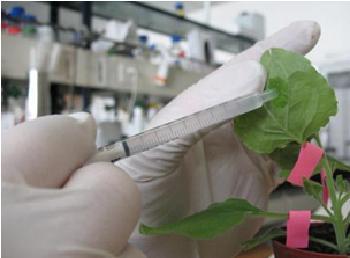Comparison of transcriptional circuits for Wood formation in Populus and Arabidopsis

We aimed at characterizing and comparing the aspects of gene regulatory networks that regulate wood formation in Populus and Arabidopsis. This study reveals details in the wiring of regulatory networks that mediate wood biosynthesis in Populus and Arabidopsis. From previous bioinformatic studies we hypothesize that Populus circuit displays enhanced self-perpetuation mechanisms by positive feedback regulation through transcription factor auto-regulation or multicomponent loops. This could at least in part explain the differences in wood-forming capacity between herbs and trees. The wood-forming transcription factor network involves upstream NAC-domain master regulators called VND7 and NST1, an intermediate regulator, MYB46, and downstream MYB-family direct activators. Comparison of the genetic circuits involving MYB46, VND7 and NST1 in Populus and Arabidopsis was done, by analyzing how MYB46 transactivates itself and the upstream regulators. The promoters of MYB46 and of the NAC domain transcription factors VND7, NST1 were isolated by PCR amplification from Populus and Arabidopsis genomic DNA. The transcription factor promoters were cloned by overlap extension PCR, and their transactivation by transiently expressed PttMYB46 was tested.The analysis showed strong transactivation by MYB46 of the Populus NST1 promoter, but not of its Arabidopsis counterpart, consistent with our bioinformatic study. Also, MYB46 autoactivation was stronger in Populus than in Arabidopsis. However, MYB46 is unable to transactivate the Populus VND7 promoter, although it can moderately activate the Arabidopsis counterpart, contrary to our predictions.
Responsible for this page:
Director of undergraduate studies Biology
Last updated:
01/26/12
